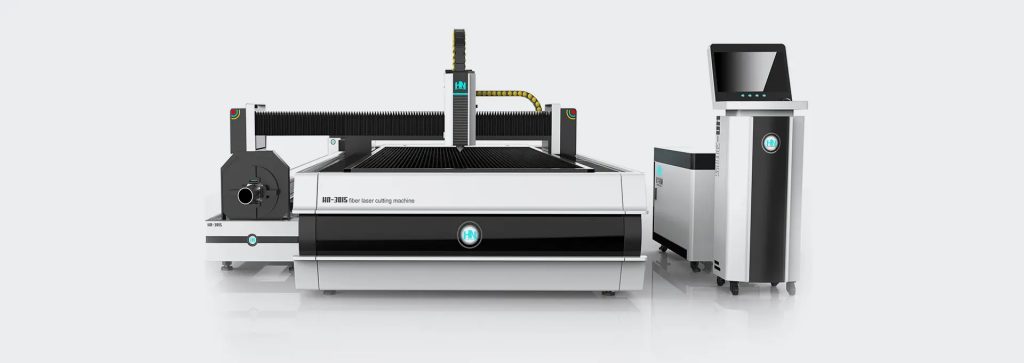
The parameters of the laser cutting machine are very important and directly affect the quality and effect of cutting. So, how to look at these professional performance parameters when purchasing a laser cutting machine?
1. Influence of auxiliary air pressure
During the laser cutting process, the auxiliary air pressure can blow off the slag during the cutting process and cool the heat-affected zone of the cutting. Auxiliary gases include oxygen, compressed air, nitrogen and inert gases. Inert gas or compressed air is often used on some metallic and non-metallic materials to prevent the material from burning. Such as cutting aluminum alloy materials. Active gases (such as oxygen) are used for most metal materials, because oxygen can oxidize the metal surface and improve cutting efficiency. When the auxiliary air pressure is too high, eddy currents appear on the surface of the material, which weakens the ability to remove the melt, resulting in widening of the cutting seam and rough cutting surface; when the air pressure is too low, the melt cannot be completely blown away, and slag will adhere to the lower surface of the material. Therefore, the assist gas pressure should be adjusted during the cutting process to obtain the best cutting quality.
2. Effect of laser power
The size of the laser power has a considerable impact on cutting speed, seam width, cutting thickness and cutting quality. The amount of power required depends on the properties of the material and the cutting mechanism. For example, materials with good thermal conductivity, high melting point, and high reflectivity of the cut surface require a larger laser power. Generally under other conditions, the laser cutting machine parameters are set.
The laser cutting machine has the laser power to obtain the best cutting quality during processing. Further reduction or increase in power will result in slag formation or overburning, resulting in reduced processing quality.
In addition, with the increase of the discharge voltage, the laser intensity will increase due to the increase of the input peak power, thereby increasing the diameter width of the spot to increase accordingly; with the increase of the pulse width, the average laser power and the laser cutting width; usually, with the pulse As the frequency increases, the cutting width decreases.
3. The influence of cutting speed on the marking process parameters of laser cutting machine.
In laser cutting processing, cutting speed has a great influence on the quality of cutting materials. The ideal cutting speed will make the cutting surface present a relatively stable line, and there will be no slag on the lower part of the material. When the auxiliary air pressure and laser power are constant, the cutting speed is inversely proportional to the cutting width. When the cutting speed is slow, the laser energy prolongs the cutting time, resulting in an increase in the cutting width. When the speed is too slow, the laser beam time is too long, and the workpiece goes up and down. The cutting difference is large, the cutting quality is reduced, and the production efficiency is greatly reduced. How to adjust the perforation parameters of the laser cutting machine.
With the increase of cutting speed of fiber laser cutting machine, the action time of laser beam energy on the workpiece is shortened, thereby reducing the thermal diffusion and heat conduction effects, thereby reducing the width of the cutting seam. When the speed is too fast, the workpiece material cannot be cut due to insufficient cutting heat input. This phenomenon belongs to incomplete cutting, and the molten material cannot be blown off in time. This molten material will re-weld the cut seam.
4. The influence of focus position
The focus position is the distance between the laser focus and the surface of the workpiece, which directly affects the section roughness, slope and width, and the adhesion of molten residue. If the focus position is too advanced, it will increase the heat absorbed by the lower end of the cutting workpiece. Under a certain cutting speed and auxiliary air pressure, the cutting material and the molten material near the cutting seam flow in liquid on the lower surface, and the molten material will adhere to the lower surface of the workpiece after cooling; if the position lags behind, the heat absorbed by the lower end surface of the cutting material will decrease. , so that the material in the cutting seam cannot be completely melted, and some sharp and short residues will adhere to the lower surface of the board. In general, the focus should be on the surface of the workpiece or slightly lower, but different materials have different requirements. When cutting carbon steel, the cutting quality is better when the focus is on the surface of the plate; when cutting stainless steel, the focus should be about 1/2 of the thickness of the plate.




